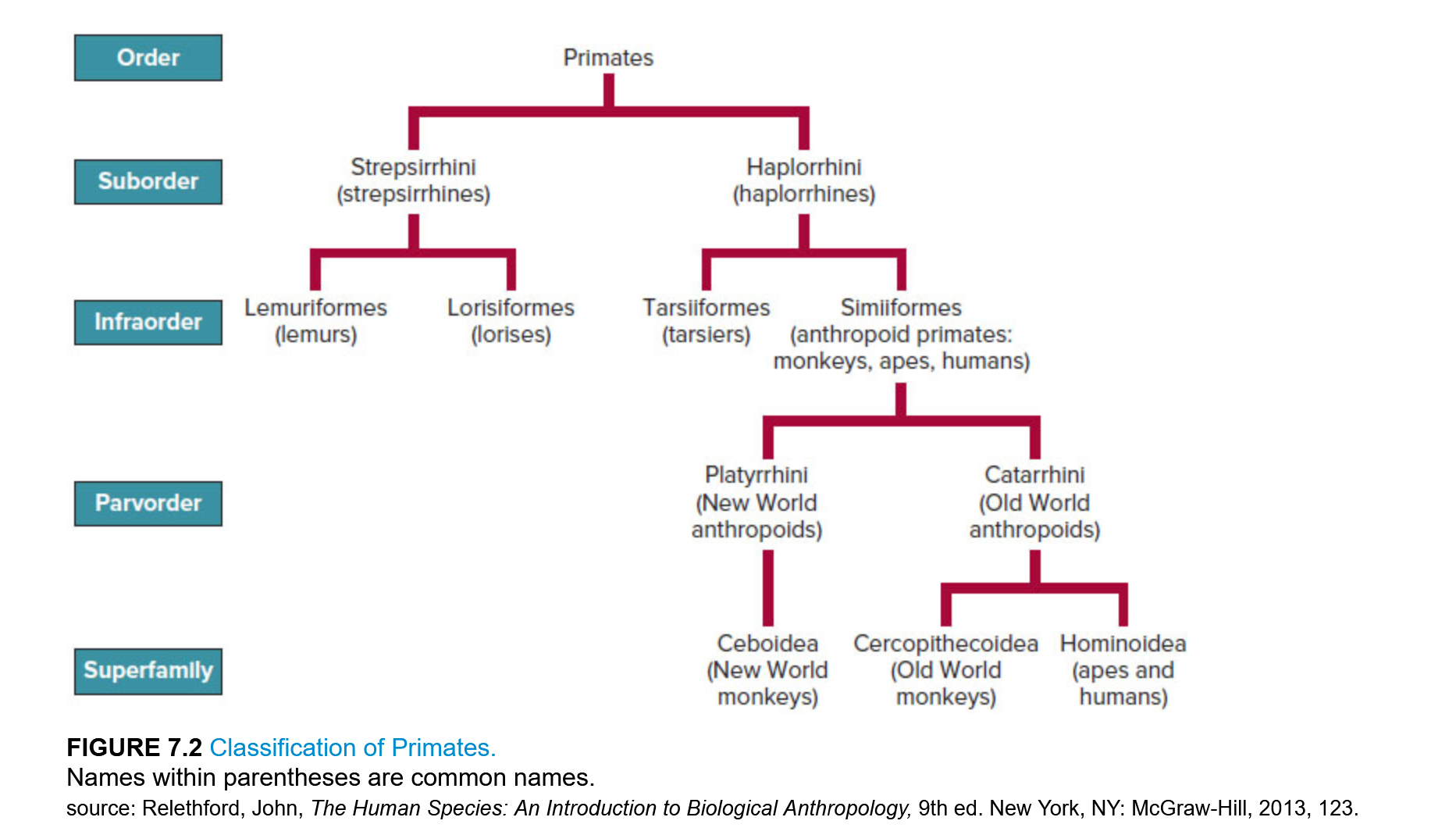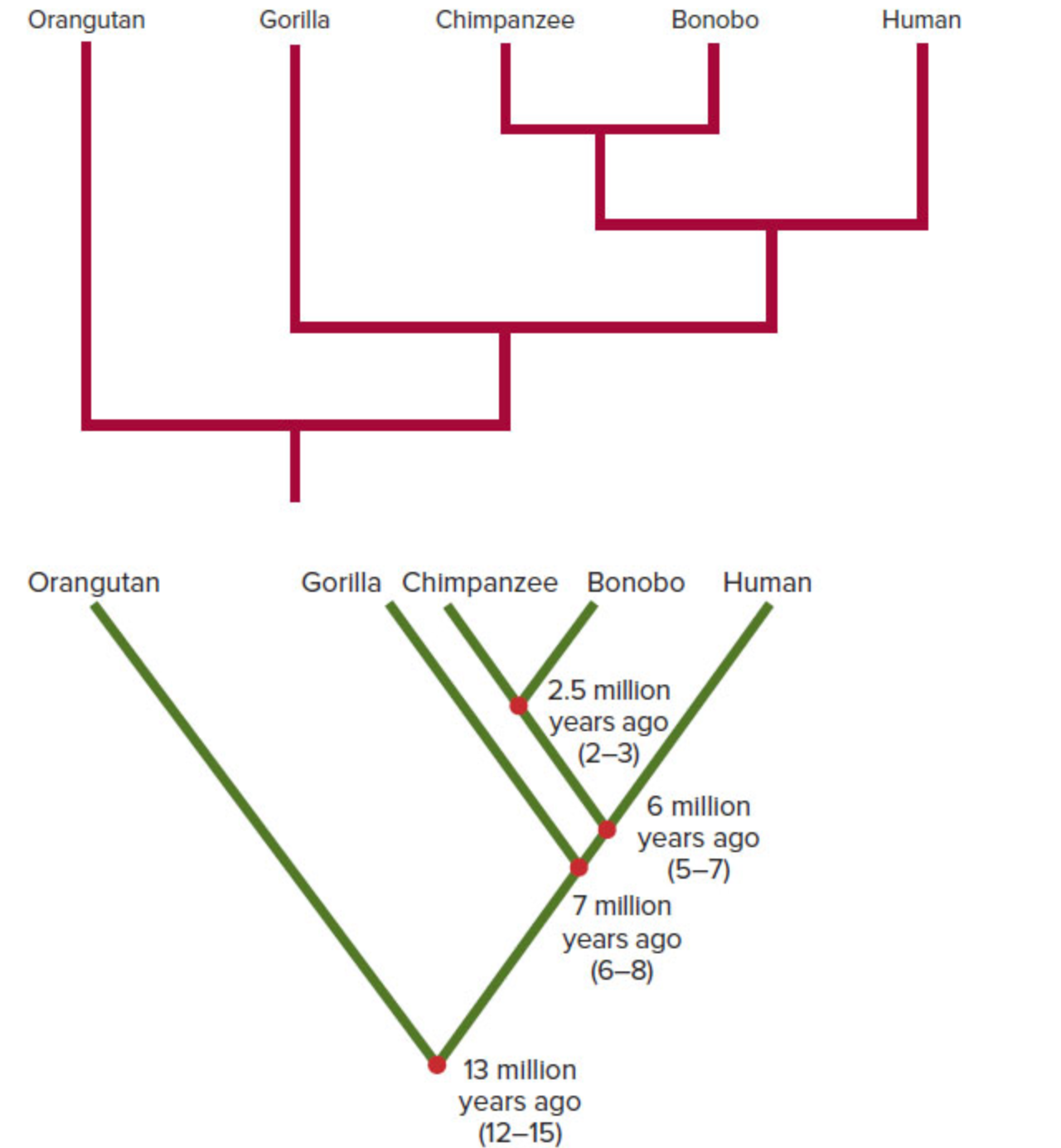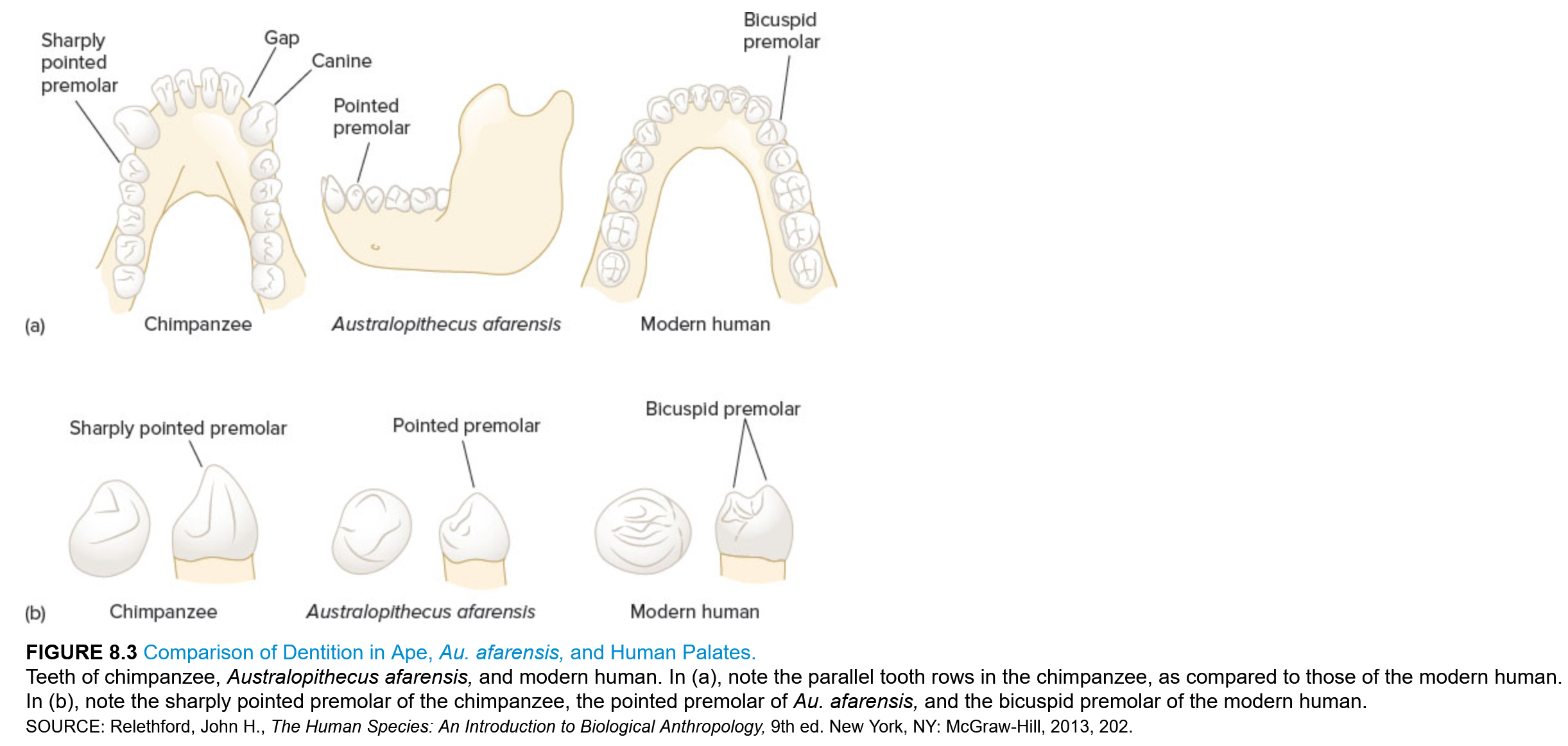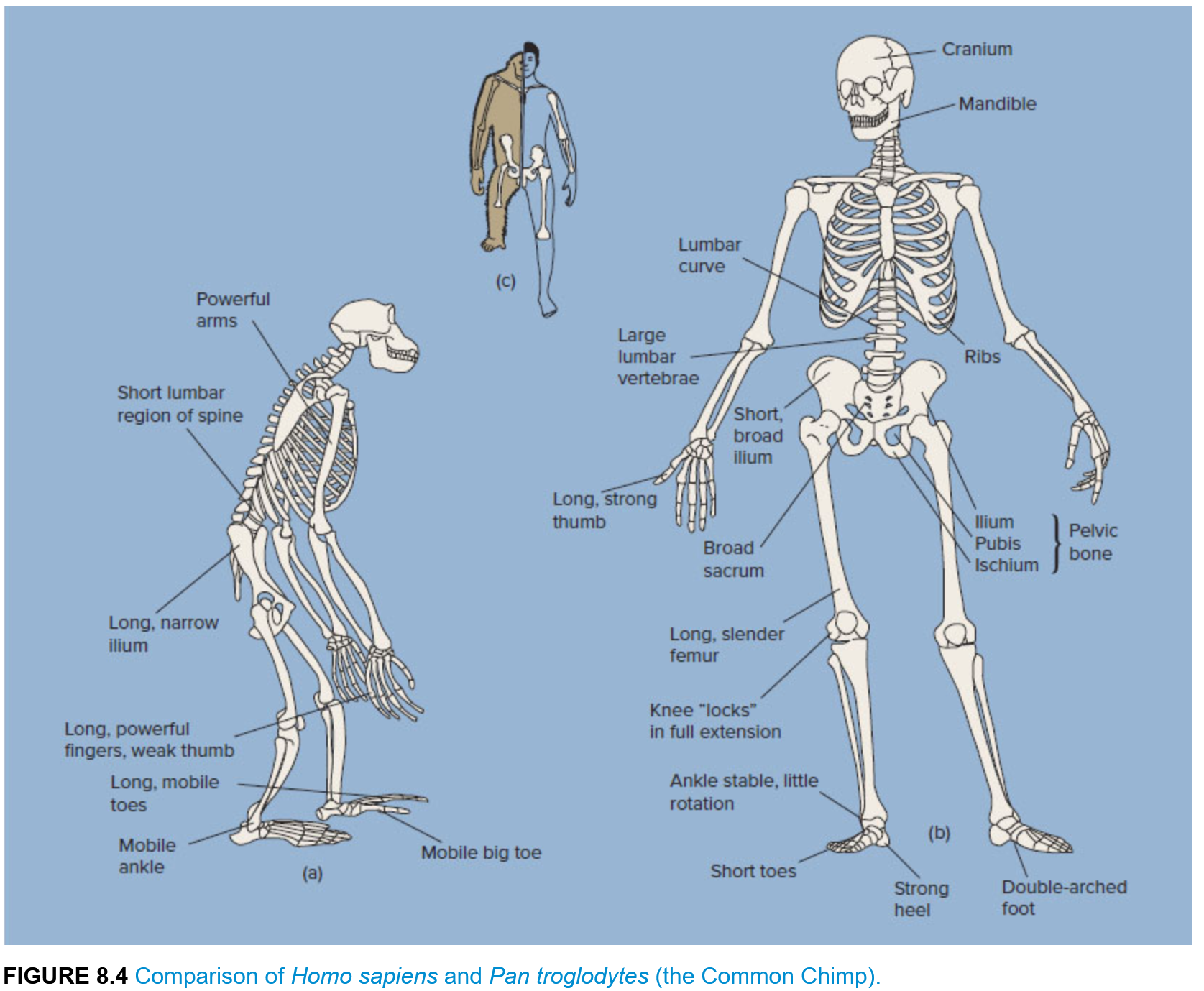Primatology refers to the study of primates that are not humans. This includes not only living but fossil apes, monkeys, lemurs, and other species. The study involves examining their behavior and social life. From an anthropological point of view, primatology plays a key role in understanding very early social structure and adaptive traits of fossil and currently living humans. Two types of primates are especially important for anthropological study, namely those having similar ecological adaptations, such as living on the ground, and those that are genetically closer to humans, such as chimpanzees and gorillas.
Zoological taxonomy is a term that helps organize animals into categories depending on their relatedness and resemblance to each other. Phylogeny refers to the relatedness of animals according to their common ancestry. Humans and apes have common phylogeny due to having the same ancestor and both fall under the same taxonomic superfamily, Hominoidea (or hominoids). According to figure 7.1, the levels of taxonomic classification begin with kingdoms and narrow down to subspecies (Kottak 110). The top of the levels, kingdoms, is the most inclusive and encompasses most species. The narrower ‘subspecies’ is the most exclusive and contains the most closely related species. The term ‘Hominoids’ indicates the classification ‘superfamily’, which is half-way up the list and therefore accommodates a somewhat large number of species. Subspecies also can include a number of groups, meaning they could be species that lived alongside each other. A primary example is the Neanderthals.


The similarities that certain species have place them in the same taxons and are referred to as ‘homologies’. These are related characteristics that the species likely inherited from the same ancestor. These traits can include mammary glands for species within the Mammalia class. From an anthropological standpoint, homologies illustrate that all mammals have a more recent ancestor with each other than with other animal classes such as reptiles or birds. Analogies are slightly different because they suggest similarities between species that are not related to ancestry but selective environments that push them in more adaptive directions. For example, porpoises are mammals but have fins like fish due to living in the same environment. Analogies are generated through what is called ‘convergent evolution’. For instance, the similarities between birds and bats (wings) are a form of convergent evolution to adapt to flying.
Considering that taxonomy is based on ancestral relations, scientists opted to use the term ‘tribe’ to divert the species that became humans away from the species that led to the emergence of chimpanzees and gorillas (Kottak 111). Figures 7.2 and 7.3 indicate that at one point about 6 million years ago, a common ancestor evolved into what would become African apes and what would become humans.
Grasping, which is the ability of primates to hold items and manipulate them, is a curial evolutionary aspect. Another trend is the transition from depending more on sight than smell. This is displayed through physical changes such as the shrinking of a part of the brain responsible for smell and the development of superb stereoscopic vision. A tactical organ is responsible for transmitting information, like cat’s whiskers do. However, a primate’s fingers are much more sensitive to touch. The brain complexity of primates has also grown and developed better memory, association, and thought. Primates are also more likely to give birth to one child, thus offering the offspring more sophisticated learning. Finally, primates are also more often found living in social groups of their own species. All these traits gather into an ongoing stream of trends that solidify primate evolution.
Though there is no certain answer to marking a point in time where humans diverged from other groups of the same tribe, there are many evolutionary clues. Bipedalism precedes the creation of tools and evolved around 5 million years ago (Kottak 131). It is associated with a range of advantages, which include being able to see over tall grass, having the ability to carry food home, and limited amount of solar radiation the body is exposed to. In the early stages of bipedalism, a lot of ape-like traits remained and allowed the early primates to still climb trees to escape predators.
An increase in the size of the primate brain may have offered more adaptivity but also had its disadvantages. Baby primates with bigger brains required the mothers to have sufficiently large birthing canals. If the canals were too wide, the pelvic region would be too wide and decrease locomotion. If it was too narrow, the mother and baby could both die during birth. However, natural selection provided a balance between upright travel and bigger brains. Baby primates would be born dependent but would develop brain size dramatically post-birth.
After bipedalism, the use of a primate’s hands could have led to the development and application of tools, which impacted the evolution of teeth. Due to living in savanna and eating vegetation that could only be digested after being chewed by big back teeth and salivary enzymes, canines and bicuspids became less practical. Large back teeth, thicker enamel, and smaller canines would become vital features for surviving in the savanna.



The two figures above compare the jaw, tooth and bodily structure of the fossils found on the sites and the current human anatomy. The wear on the teeth of the fossils reveals a soft and sugar rich diet with harsher and harder foods as backup nourishment. The early hominins also expressed much smaller craniums and broader sexual dimorphism. Fossilized print also hinted at bipedalism along with the hip, leg and foot structure. Additionally, the placement of the skull and spine connection is right at the bottom of the head, as opposed to at the back of the skull.
Reference
Kottak, Conrad. Anthropology: Appreciating Human Diversity. McGraw-Hill Higher Education, 2018.
